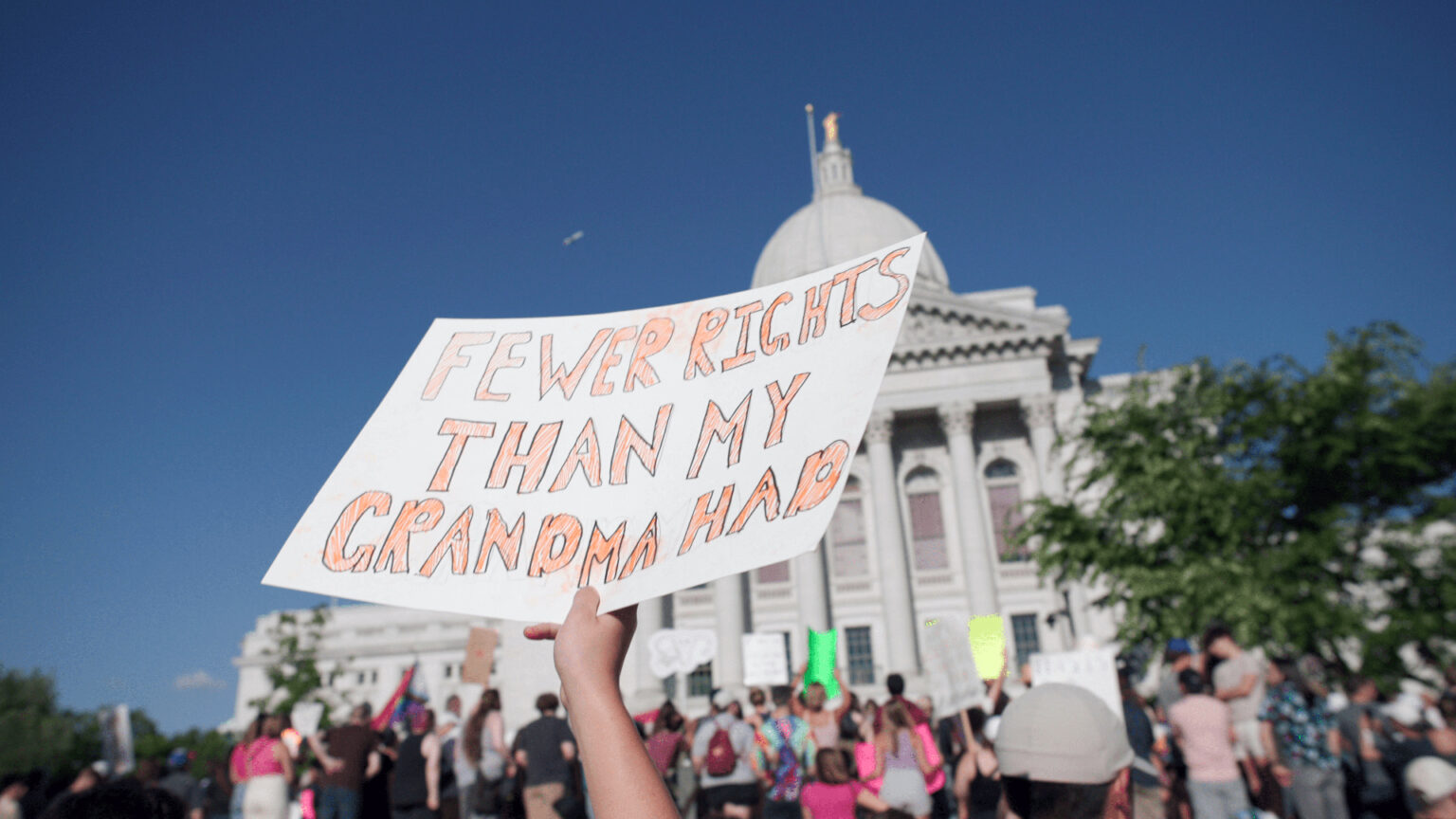Abortion and women’s reproductive rights have been a topic of contention over the last half-century. Organizations around the world have been formed in both support and contestation of these rights. As the 50th anniversary of the historic Roe V. Wade supreme court case was approached and ultimately overturned, it is important to reflect on the way this memory was celebrated and the processual way this celebration changed. During the 1950s and 1960s, illegal abortions were found to be extremely common and usually entailed dangerous and life-threatening procedures. One survey found that” the number of illegal abortions in the 1950s and 1960s ranged from 200,000 to 1.2 million per year … extrapolating from data from North Carolina, concluded that an estimated 829,000 illegal or self-induced abortions occurred in 1967″,[1] which notes how illegal and dangerous abortions were extremely common in the United States. These shocking statistics peaked the interests of many groups across the country and led to widespread support for the legalization of abortions
A leading organization in this support was a group of feminists called the “Redstockings”. The group was formed by Ellen Willis and Shulamith Firestone in 1969 and consisted mostly of Jewish women whose goal was to combat the legal ban on abortions, later expanding to fight all oppression, using what was considered “radical” approaches.[2] This group would show up to legal hearings and other large gatherings, seemingly out of nowhere, and protest legislation that put a ban on abortions. These radical techniques would become what is known as “raps” and are still used by many political protesting organizations in the 21st century [3]. The Redstockings led a revolution in the way people rallied and protested ideas. Eventually, their work paid off in 1973 when the supreme court ruled that the right to an abortion was supported by the U.S. Constitution in Roe V. Wade.
:max_bytes(150000):strip_icc()/license-shutterstock_178095647z-56cddde63df78cfb37a34ded.jpg)
This led to many members celebrating this historic court case by organizing marches and sharing personal stories about their own experiences with abortions. This celebration became a longstanding tradition and a way of commemorating this specific moment. The Redstockings and their initial actions have set the standard for reflecting upon the memory of this supreme court decision. However, now that Roe V. Wade has been overturned by the decision in Dobbs V. Jackson Women’s Health Organization in 2022, the 50th-anniversary commemoration of women’s federal rights to abortions has been thwarted. Individuals can no longer celebrate this federal right and must change how they view the memory of Roe V. Wade and those who fought for it to be passed.
This means the Redstockings must be analyzed in a different light than just the traditions they have started. They must be looked at in how they began their movement and where their cause began. The first real action of this group can be traced back to February 13th, 1969 in Albany, New York. On this day, a group of members of the Redstockings gathered at the New York state house and disrupted a public hearing on abortion. The group appeared at the hearing and started chanting and demanding that the leading council hear their voices and concerns. After this, the hearing was moved to a private area where only council members could speak on the topic. Some of the Redstockings were able to enter this area and found that out of the 15 council members, only one was a woman. This led to many members gathering outside the doors and eventually causing enough of a commotion to break up the hearing. This was the first case of the Redstockings pushing against the legal ban on abortion and retaliating against lawmakers.

Due to the recent overturning of Roe V. Wade, a process has started in which the memory of this event has become one that is being extensively looked at. Roe V. Wade can no longer be commemorated and celebrated as the Redstockings did after 1973. Instead, groups are starting to adopt this retaliation seen in 1969 and push against lawmakers and other individuals that thwarted the 50th anniversary of Roe V. Wade. It is a way in which memory is both a particular idea and a changing process that never stays static. Individuals have now started to, again, fight for the right to an abortion as seen on June 24th, 2022 at the Wisconsin State Capitol. A group of pro-abortion activists gathered at the steps of the capital and began protesting the decision to overturn Roe V. Wade. These individuals protested for hours with one protester stating I think it’s ridiculous that it’s 2022 and I still have to fight for my reproductive rights, “I mean, when have men ever had any of their rights in general questioned?” [4] The memory of the Redstockings has been used here to bring upon action like in their “raps” protests and turn to the ideas of feminist pushback against the oppression of women. It is a continuation of the memory that started in 1969 in which almost 50 years after the initial legalization of abortions, women a reliving the same lives the Redstocking members did.

-Matthew Noel
Work Cited
[4] Denzin, N. (n.d.). Protesters gather at Wisconsin capitol after U.S. Supreme Court overturns Roe v. Wade. PBS Wisconsin. https://pbswisconsin.org/news-item/protesters-gather-at-wisconsin-capitol-after-us-supreme-court-overturns-roe-v-wade/
[3] Evans, H. (2022, May 13). The Redstockings: “Rapping” for reproductive rights in Greenwich Village. Village Preservation. https://www.villagepreservation.org/2022/05/09/redstockings/
[1] Gold, R. B., & Guttmacher Institute. (2022, August 30). Lessons from Before Roe: Will Past Be Prologue? Guttmacher Institute. https://www.guttmacher.org/gpr/2003/03/lessons-roe-will-past-be-prologue
[2] More, B. (2022, May 12). We must take a page from Jewish reproductive justice activists and continue the fight. We Must Take a Page from Jewish Reproductive Justice Activists and Continue the Fight. https://jwa.org/blog/we-must-take-page-jewish-reproductive-justice-activists-and-continue-fight